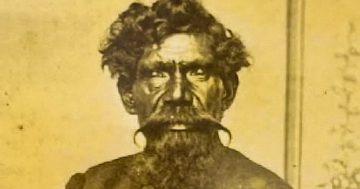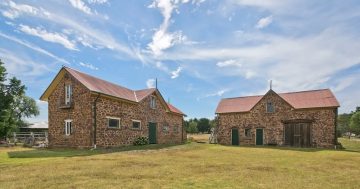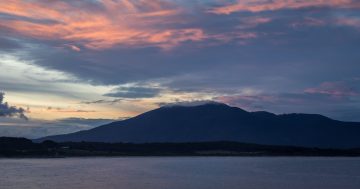
The owner of historic Lansdowne Park is applying to subdivide the surrounding farmland for housing. Photo: John Thistleton.
Goulburn First Nations people are objecting to a proposed 79-lot residential subdivision on the northeastern edge of Goulburn at historic Lansdowne Park. They say sections of the 14 hectares surrounding Goulburn’s oldest homestead are the gravesites of their ancestors.
Consultants acting for the proponent, Lansdowne Park owner Rashid Bhuiyan, say the evidence of graves is not site specific, and areas identified are outside of the development area.
The details of Lansdowne’s pre-European and colonial past are in a development application lodged with Goulburn Mulwaree Council. The application is for house blocks from 700 to 2000 sqm and new roads to four cul-de-sacs and access from Forbes Street, Banksia Way and Memorial Road.
Historian and author Charles Macalister described the hill above Lansdowne as a great burial site of the Wollondilly tribe. He named tribal elder, Kugolgong, as being buried there.
Mulwaree Aboriginal Community public officer and secretary Jennie Gordon said that in 1820 Kugolgong (also known as Coocoogong) met governor Lachlan Macquarie on top of the Cookbundoon Range and accompanied him and his party down to Lansdowne Park.
Ms Gordon also cites an article from George Clout, a journalist who was born at Lansdowne Park, recording burials of Aboriginal people at the property on Goulburn’s north east fringe. Writing in the Gundagai and Tumut newspapers, Clout recounted the aftermath of a bloody tribal feud.
“The present writer in his youthful days had many opportunities of seeing the burial places of the Argyle tribe of Aborigines at Lansdowne, the head centre of the Bradley estate at Goulburn where numbers of them were buried,” Clout wrote in October 1918.
Ms Gordon said allowing the subdivision to proceed would be akin to subdividing land at Goulburn’s General Cemetery for new homes.
She is applying to NSW Heritage for a declaration of the area as an Aboriginal Place which, after reviewing of assessments could mean the land is protected under the National Parks and Wildlife Act 1974.
Ms Gordon has numerous records and books showing contrary to some claims, local First Nations people did not die out in the 19th century but survive to the present day.
Meanwhile, Lansdowne Park’s Aboriginal cultural heritage assessment also cites Macalister and Clout, but adds neither provided any locational data other than the ‘hill above Lansdowne House’ or ‘at Lansdowne’.
A field survey and subsurface testing in 2021 revealed three artefacts. Three additional areas were also investigated. No evidence of burials were encountered, but isolated or low-density artefacts were recovered in some of the test pits, according to the assessment report.
To address the concerns that burials may be impacted the assessment report recommended cultural monitoring of initial soil displacement. It said evidence of burials was outside of the proposed development area.
Consultants rejected local requests for ground penetrating radar to identify burial sites because of the topography of the sites, the cost and time needed.
Lansdowne Park’s planning consultants say the development will open up the significant historical property for wider community appreciation.
The significance to the Aboriginal community before and after colonisation would be acknowledged in signage and Aboriginal words or people would be used for street names whenever possible.
Known as ‘Bugong’ before European settlement, it was a gathering place over changing seasons for Indigenous populations from the surrounding district.
Lansdowne Park was part of a larger land grant to Jonas Bradley and sons William and Thomas in 1833. They grew tobacco and built an industrial complex at Lansdowne Park that comprised a flour mill, a malt house, and a brewery. On Jonas’ death in 1841 all lands passed to William who became one of the largest landholders in this part of the colony.
A statement of significance for NSW heritage says Lansdowne homestead and surrounding precinct has been associated with the development of Goulburn since the earliest days of exploration in the area and was one of the first properties settled in the area south of the Cumberland basin.
The homestead is a scarce example of an early timber colonial homestead with its ‘U’ plan, high-pitched roof and encircling verandah. The fabric provides rare physical evidence of early timber building techniques used in the colony.
In addition to the homestead the site supports a cluster of buildings. Significant ones include a flour mill, a malt house building and a brewery building, a former chapel/synagogue building, and a summer house.
A statement of heritage impact said the proposed subdivision will reduce the size of Lansdowne Park but has minimal impact on any of the significant structures. The main potential impact is the setting and views to the northwest floodplain toward the former brewery. This view can have a reduced impact with some specific and detailed planning controls including planting a hedge buffer.









